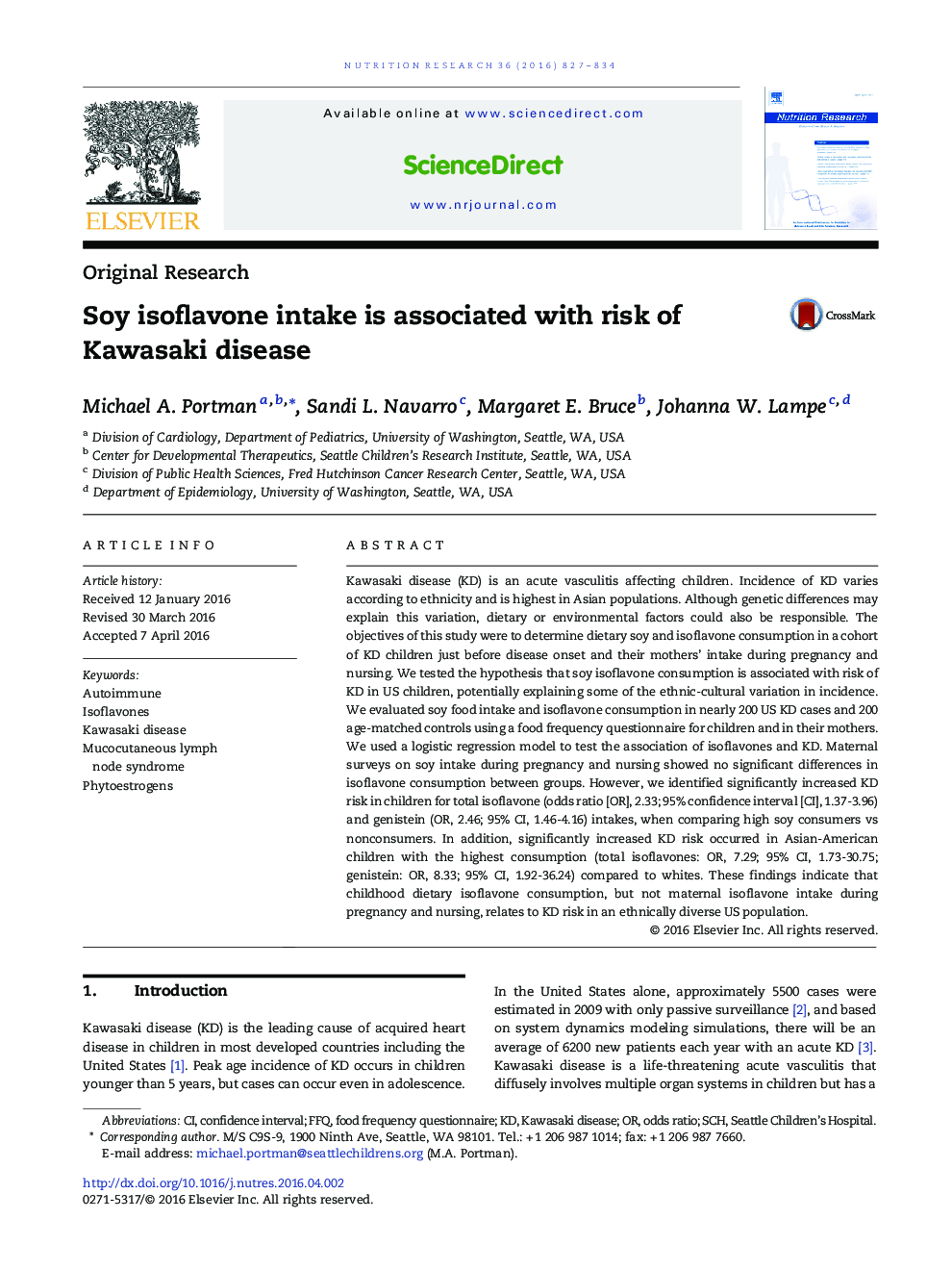| کد مقاله | کد نشریه | سال انتشار | مقاله انگلیسی | نسخه تمام متن |
|---|---|---|---|---|
| 2808818 | 1157971 | 2016 | 8 صفحه PDF | دانلود رایگان |
Kawasaki disease (KD) is an acute vasculitis affecting children. Incidence of KD varies according to ethnicity and is highest in Asian populations. Although genetic differences may explain this variation, dietary or environmental factors could also be responsible. The objectives of this study were to determine dietary soy and isoflavone consumption in a cohort of KD children just before disease onset and their mothers' intake during pregnancy and nursing. We tested the hypothesis that soy isoflavone consumption is associated with risk of KD in US children, potentially explaining some of the ethnic-cultural variation in incidence. We evaluated soy food intake and isoflavone consumption in nearly 200 US KD cases and 200 age-matched controls using a food frequency questionnaire for children and in their mothers. We used a logistic regression model to test the association of isoflavones and KD. Maternal surveys on soy intake during pregnancy and nursing showed no significant differences in isoflavone consumption between groups. However, we identified significantly increased KD risk in children for total isoflavone (odds ratio [OR], 2.33; 95% confidence interval [CI], 1.37-3.96) and genistein (OR, 2.46; 95% CI, 1.46-4.16) intakes, when comparing high soy consumers vs nonconsumers. In addition, significantly increased KD risk occurred in Asian-American children with the highest consumption (total isoflavones: OR, 7.29; 95% CI, 1.73-30.75; genistein: OR, 8.33; 95% CI, 1.92-36.24) compared to whites. These findings indicate that childhood dietary isoflavone consumption, but not maternal isoflavone intake during pregnancy and nursing, relates to KD risk in an ethnically diverse US population.
Journal: Nutrition Research - Volume 36, Issue 8, August 2016, Pages 827–834
